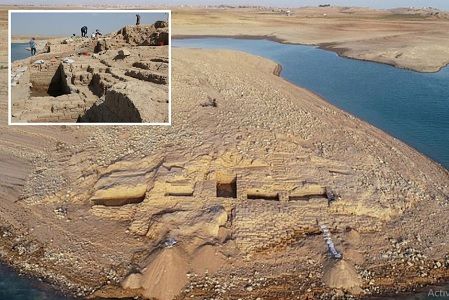Drought Reveals 3400 Years Old Lost City From Under Water
Jul 02, 2019 • 86 views
After years of searching, hundreds of expeditions and spending millions of bucks the existence of Atlantis, the marvelous city that went under water is still a big topic of many debates.
But recently, as the mercury level is rising around the globe, drying up several open fresh water sources, draught has hit multiple. As a result the reservoir of Mosul Dam in Iraq has an alarming receded water level. Although looking at it from the water supply point of view appears to be a very grave concern, but this drying up phenomena has brought up an ancient civilization from the bottom of the waters.

An ancient civilization as old as 3400 years to be exact just emerged from the reservoir on the banks of Tigris River in the Kudristan region of Iraq.
The discovery of the ruins of the civilization sparked an archeological dig and is said to be the remains of a lesser known empire of the Ancient Middle East, also known as the Mittani Empire. In any archaeological discovery the findings are the most important part for an improved understanding of the civilization.

The ancient area being almost 1 kilometer in length and approximately 500 meters in width also has some wonderful urban structures. These structures included a palace, a grand house, a cemetery and most importantly a well planned road network. The archaeologists are speculating that the palace would have originally be 65 feet high from the river on an elevated terrace like structure. The construction was the stabilized by adding a terrace wall of mud bricks, which would have also served to impose the massive architecture. Some of the walls are more than two meters high, including various rooms with walls that have been plastered. The team of researchers also found wall paintings in shades of red and blue.

The only other place in the region where the archaeologists have found paintings of similar color combination and pattern is Kemune, which is also another region from Mittani period.
These specific kind of artwork are believed to be a common feature of palaces (one have been excavated) at the time, few of them have been even found still now, but none of them were found to be so well preserved.
Few more of the findings are clay tablets covered in cuneiform, an ancient system of writing. The group of onsite researchers has sent high-resolution photos of the texts to Germany for translation. The archaeologists have high expectation from those texts to gain information that will improve understanding of the inner structure, including economic organization and various other details of the Mittani Empire. It is also expected to give information about the relationship of the administrative centers in the neighboring regions with the Mittani capital.
